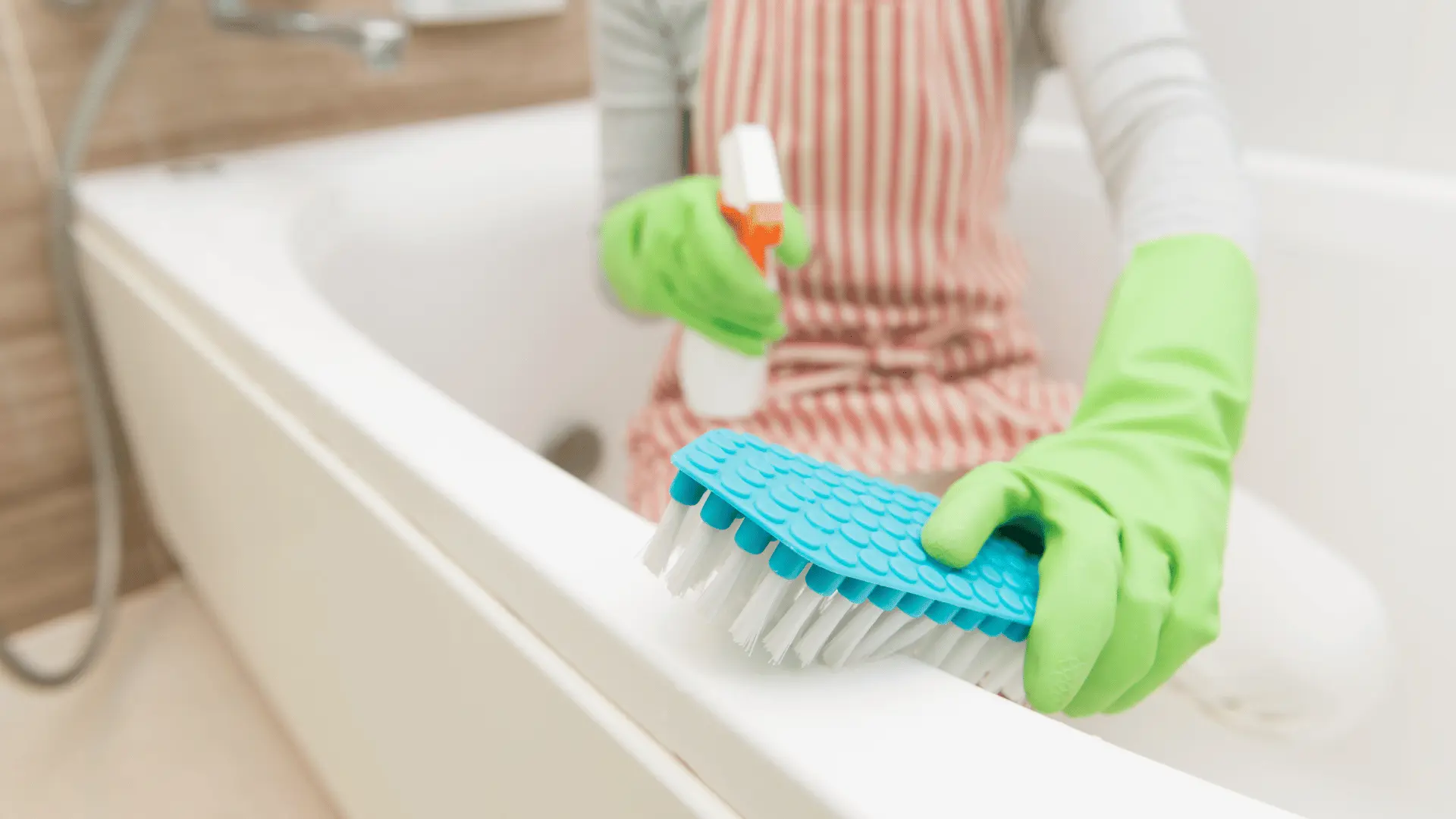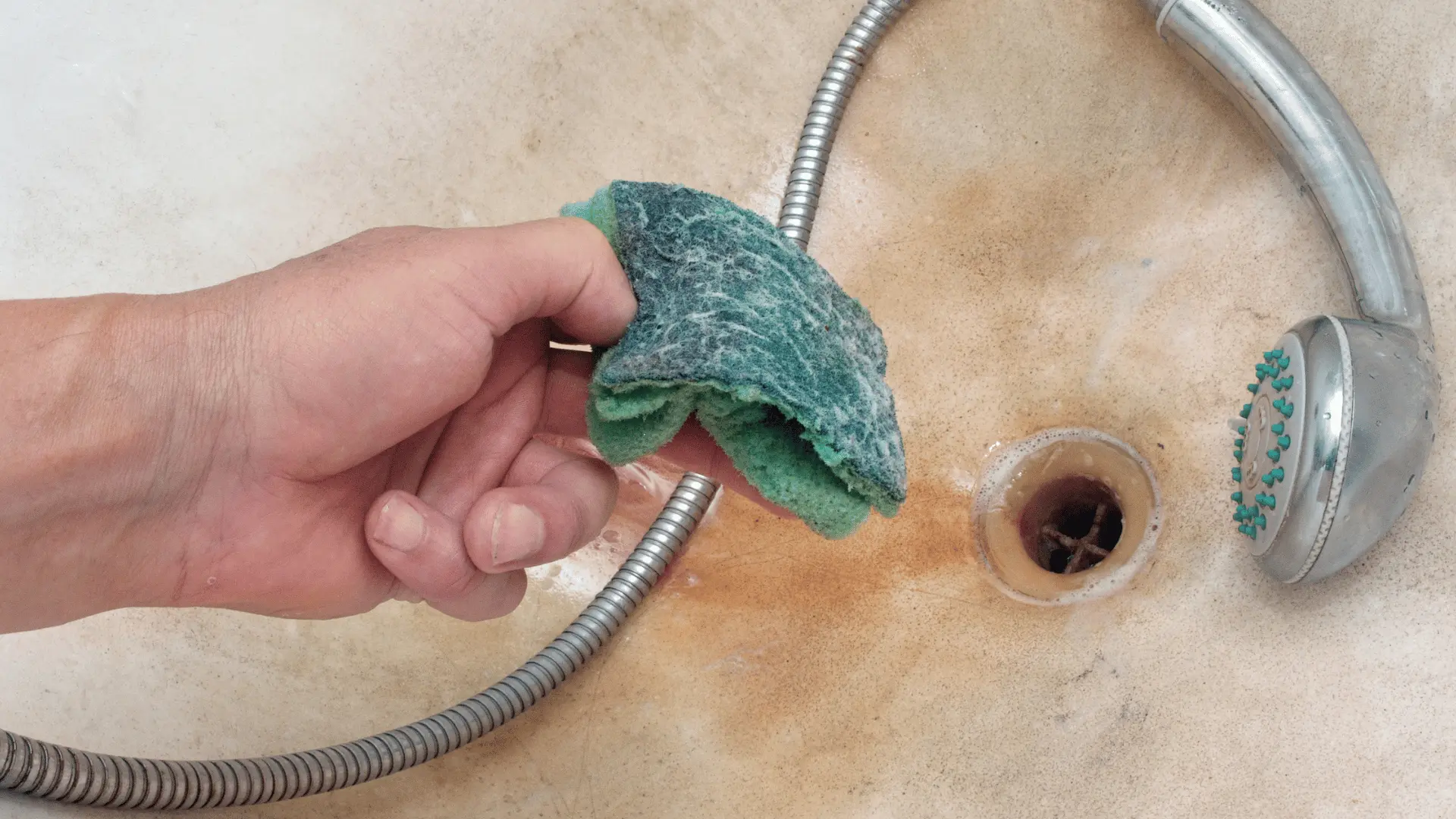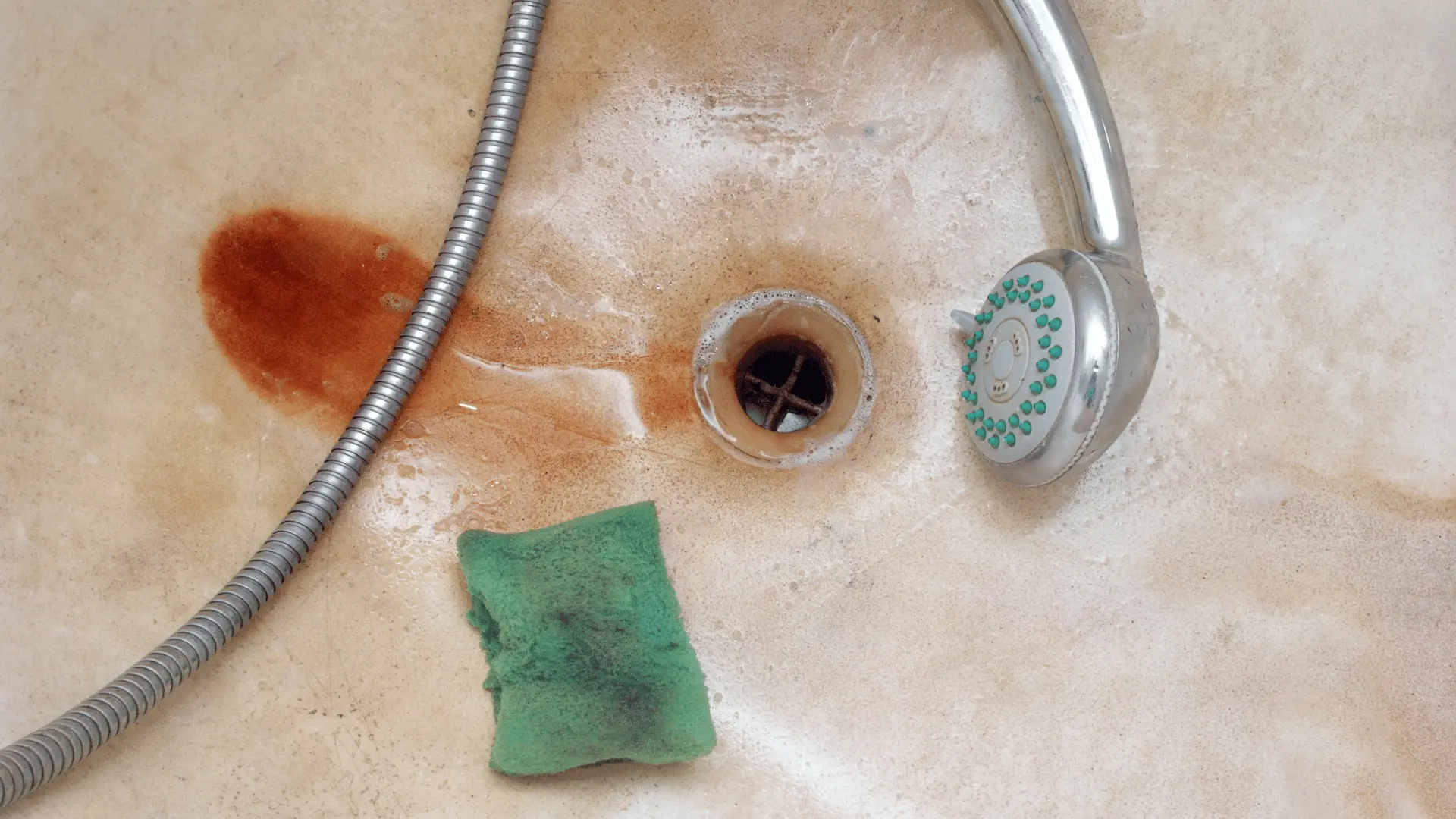A bathtub, a space for cleansing the body, has a natural tendency to become dirty. This is not only due to our own organic impurities when we wash, but also from dried and hardened limescale and buildup that literally grow on the smooth surface as if from nowhere. It only takes a moment of inattention or neglecting regular cleaning, and they appear. Getting rid of them can be difficult. To effectively remove them, you need to know their origin.

Removing limescale from a bathtub depends on two interconnected details. Firstly, the type of mineral that caused the limescale or buildup, and secondly, the material from which the bathtub is made. Incorrect cleaning methods can damage the surface of the bathtub more than the specific limescale. And that’s certainly not what you want. Bathtubs are made from various materials nowadays, with designer solid wood, rough stone, cast marble, or basalt glass being trendy options.
However, these materials are still relatively uncommon despite their aesthetic appearance. The standard bathtub is still mostly made of enameled steel, acrylic, or reinforced ceramics. It is generally true that ceramics are more resistant to abrasion (scratching, rubbing, sanding), whereas with acrylic and enamel, a bit more care is needed to avoid damaging the relatively thin surface.
How Limescale Is Formed

Mineral limescale in the bathtub are formed by a combination of several factors. Perhaps the most significant factor is the hardness/softness of the water and its pH, which affects the formation of limescale. The design of the plumbing and faucet also play a role, as they can stimulate certain chemical reactions when combined with water. The quality of the faucet/seal, which prevents continuous dripping of water, is also a factor.
More than theoretically, the frequency of bathtub usage also matters (for example, in a summer apartment, it will not be used as often), as well as the average water temperature (higher temperatures promote mineralization). Your specific bodily impurities and the composition of cosmetics and hygiene products used can also contribute to a cocktail of process chemistry. Of course, bacteria can also play a role.
All of this goes hand in hand with how you keep the bathtub clean on a regular basis. For example, if you dry it thoroughly after each use, if the bathroom is well-ventilated or has a high level of condensation and humidity. Ideally, cleaning the bathtub from dust, dirt, soap residue, and shampoo should be done once a week. When all of this comes together (or fails to come together), it can lead to sedimentation, precipitation, corrosion, and mineralization.
Limescale According to Colours
Reddish-brown and orange limescale indicate that the cause of the limescale is iron, iron-rich water, or rust. Rust-colored or bluish-green limescale are usually caused by low water pH, which makes it more acidic. Such water has increased corrosive effects. Black spots are usually caused by a combination of various factors, with sulfur playing a significant role. Yellow limescale usually indicate a critical accumulation of various types of grease, originating from the “human source” and the cosmetics used.
In general, the most common problems are with orange and yellow limescale. Orange-rusty water usually suggests that your boiler or old piping is rusting. Yellow indicates that the problem is in the bathroom and the cleaning products you most frequently use. Even completely atypical colors such as pink, purple, or green can appear. However, their formation is usually not due to mineralization, but rather to dripping colors from clothing that you sometimes dry above the bathtub. They can also “eat” into the surface, but can be removed.
Cleaning Atains According to Colour

- To remove stubborn red or black limescale, use the brightening power of baking soda and hydrogen peroxide. Mix two parts baking soda and one part hydrogen peroxide to create a paste. Apply in a layer, leave on for 20-30 minutes, then scrub with a brush. No, do not try this on acrylic tubs, as it will damage their surface.
- Orange limescale can be effectively removed with bleach. Apply, leave on for 10-15 minutes, then rinse with lukewarm water and scrub. Not suitable for acrylic tubs.
- For rust and bluish-green limescale, use an abrasive cleaner or scrubbing powder, in combination with a rougher sponge (rubber, melanin). Again, not suitable for acrylic tubs.
- Yellow limescale and grease can be eliminated with the help of weak acid, vinegar. White vinegar. Pour vinegar diluted 1:1 with water into a spray bottle, spray on the surface of the limescale, let it sit for a while, then wipe off. You can safely use vinegar even on acrylic tubs.
- Universal chemical cleaners and bleaches – work perfectly on all types of limescale, but read their labels carefully. Not all are gentle on acrylic tubs.
- Tricky colored limescale from textiles – definitely do not use fabric bleach, as it can damage the surface of the tub or enamel. However, vinegar or a paste made from baking soda and lemon juice should do the trick.
Limescale by Composition
- Usual and dried soap and shampoo residues that create unsightly crusts? Try a mixture of borax and lemon juice on them. Apply, leave for 10 minutes, scrub with a cloth, rinse and wipe dry.
- Precipitated limescale that does not cause drips but unsightly crusts? Industrial acid-based cleaners can help. First, slightly dampen the limescale, apply, wipe, rinse, and dry. Do not leave it for longer than 1 minute, and do not use it on plastic tubs.
- Rust on metal parts, in the bathtub drain – it is possible to remove it with hydrogen peroxide and scrubbing with pumice or a rough brush.
- Black and green molds – bleaching or toilet cleaner gel can help. It is best to spray corners and hard-to-reach areas with a spray or aerosol, and cover the surface with a paper towel to prevent dripping.
Summary
Removing limescale from a bathtub is not a problem, often with the help of commonly available household items, if you know what is causing them. It is also worth mentioning that acrylic bathtubs are accessible in terms of design and price, but they are much more susceptible to harsh cleaning methods.
And of course – you should definitely not skip regular bathtub cleaning. Only by doing this can you save yourself a lot of unnecessary extra work. After each use, it is advisable to thoroughly rinse the bathtub and wash away any soap, shower gel, shampoo, and dirt residues. A more thorough cleaning of the bathtub should be done once a week. However, be gentle while doing this.
Overly radical cleaning methods (such as various recommendations to fill the bathtub with water, pour X liters of vinegar into it, and let it stand overnight) can negatively affect the quality of the bathtub surface. The worn surface might look cleaner for a while, but it would get dirty more easily and its lifespan would be reduced.
Leave a Reply